Both of these are Mud-Terrain (M/T) tires where BFGoodrich KM3 has better traction on rocky surfaces while Copper Discoverer STT Pro performs better on-road. KM3 has less contact patch that’s why it is unable to perform well on the road and the Cooper lacks traction on rocky terrains as it has very few stone ejectors.
Due to better-built standards, the KM3 stands out when it comes to the durability. Find more about the unique design of both tires in the upcoming section.
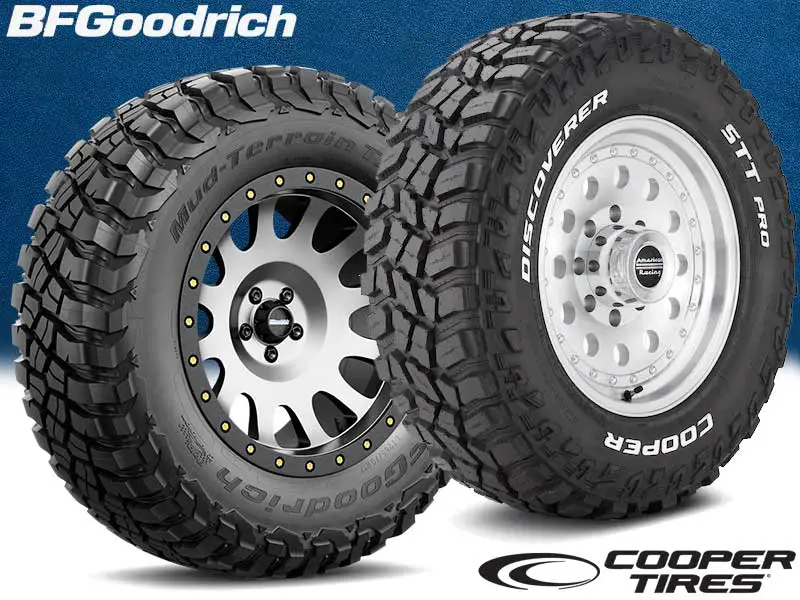
Table of Contents
Comparing Cooper STT Pro with BFG KM3
BF Goodrich KM3
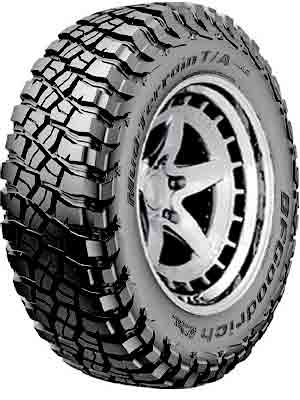
Cooper Discoverer STT Pro
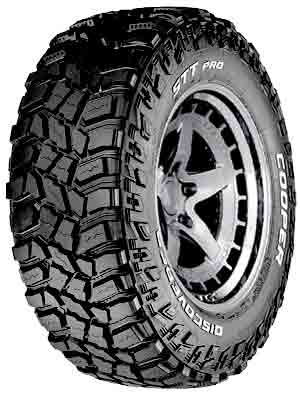

Vs
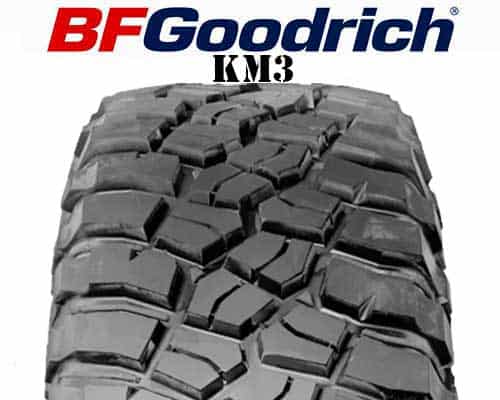
Due to less contact patch with the road, BFGoodrich KM3’s on-road capabilities are not good. There is a single large sipe embedded along each of its tread block which enhances its performance in wet conditions.
The high gaps between the tread blocks are also helpful for driving in wet conditions as they allow water to pass through them, preventing hydroplaning.
It has an aggressive symmetrical tread design that employs wider grooves that throw mud and soft soil backwards allowing the tires to move forward, enhancing its off-road capabilities.
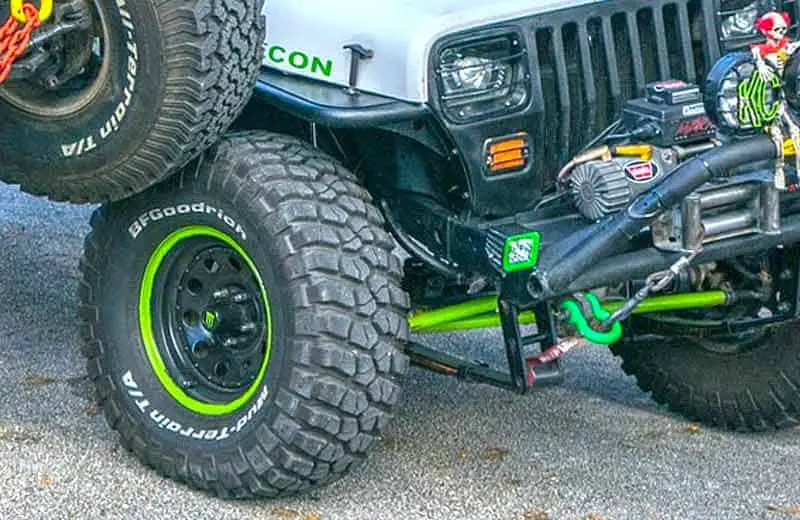
KM3 also has bold stone ejectors to avoid stones getting inside the grooves which makes its traction very good while moving on rocky terrain.
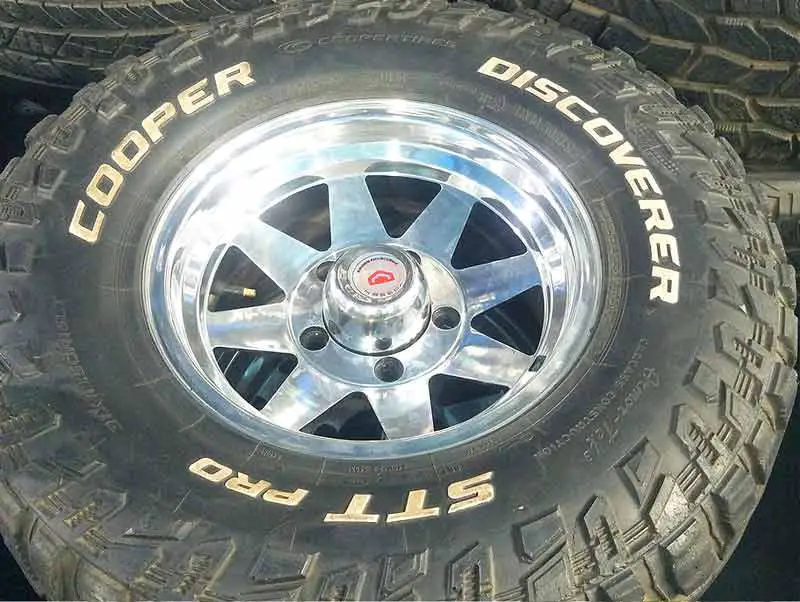
Cooper STT Pro has a dense block pattern with a slightly lower void ratio (compared to KM3) while having decent contact with the ground which increases its grip on the road under dry conditions.
It has deep grooves and micro sipes on the shoulder blocks that are running deeply into the tread, which helps to avoid hydroplaning.
The STT has deep grooves which don’t allow mud to get stuck inside them, making them suitable for off-roading (Not as efficient as KM3).
Since its grooves are not wide as that of KM3 it’s not efficient in deep snow and muddy terrain.
On-Road Traction Comparison
BF Goodrich KM3 has less surface area in contact with the road which doesn’t allow great traction.
The area in contact is reduced due to the absence of a decent tread face of the tire since it has a greater void ratio.
The large gap between the tread blocks doesn’t allow good grip and handling in dry conditions.
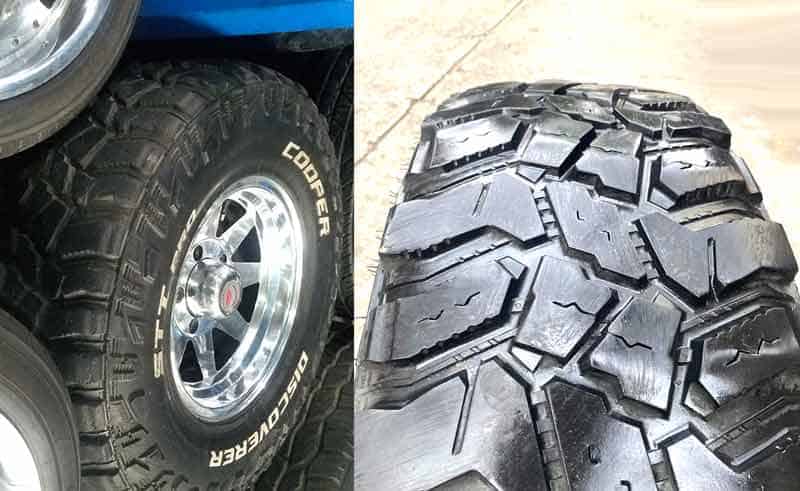
Copper STT Pro has a dense tread block pattern which allows a slightly better on-road driving experience due to better grip enabled by more part of the tire’s area in contact with the road.
The void ratio of STT is comparatively less than KM3. It has wider patches of blocks, increasing the surface area hence allowing good grip and handling on-road as compared to KM3.
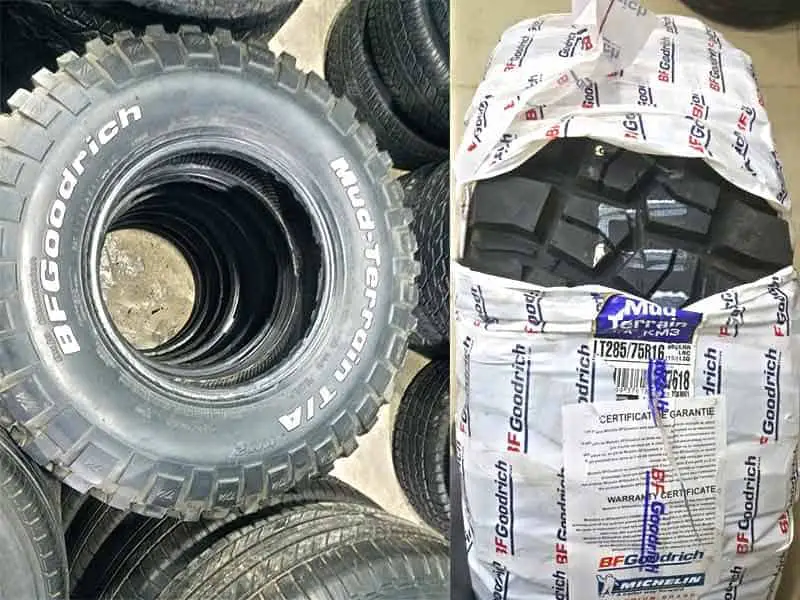
BF Goodrich KM3 does offer better-wet traction on road due to its higher void ratio which allows a considerable amount of water to pass beneath the tires avoiding hydroplaning.
The large sipes present within the grooves also help in the efficient navigation of KM3 on watery surfaces by wiping the water away.
STT Pro has a lower void ratio compared to KM3 hence its water navigation properties are slightly lacking. It has Micro-Gauge Sipes which are thinner than regular sipes and run deep within the tires allowing some water to be wiped making its wet traction lesser than that of Goodrich’s on the road.
Mud Traction
KM3 has wider grooves which come in handy especially in muddy terrain. The grooves between the treads of the tires throw mud backwards as the tire moves forward clearing the path of the tires, improving its traction.
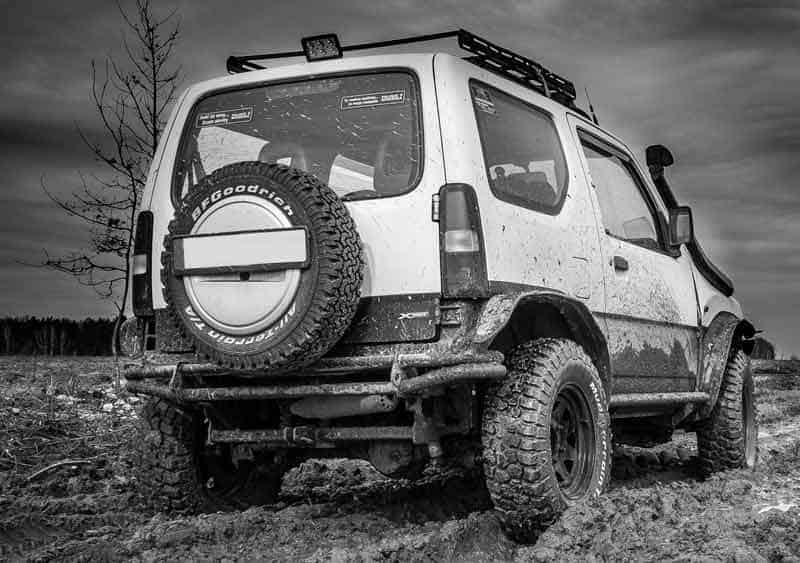
The highly optimized design and wide gaps between its shoulders allows the mud to pass through it, improving its handling
STT has slightly narrow but deeper grooves than KM3 making its performance second to that of its competitor.
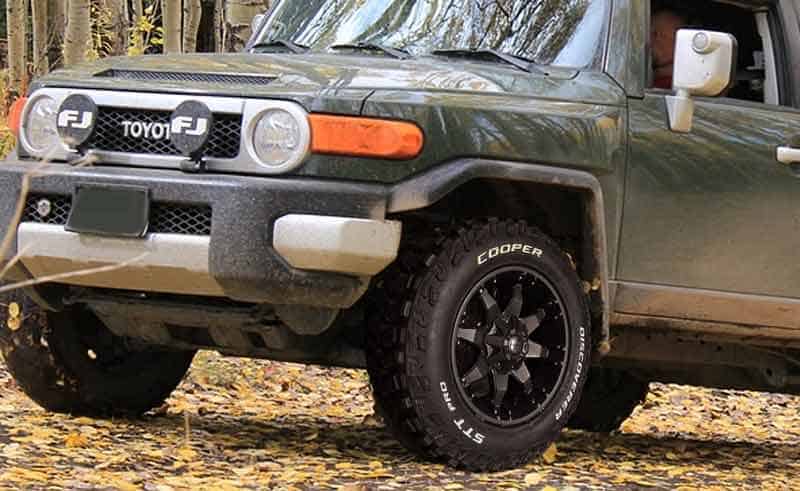
Its deeper grooves prevent mud from sticking between the tread blocks by throwing mud particles backwards. Cooper also has unique angled shoulder scoops which allow mud-clearing out of the tire faster, increasing the handling in muddy terrain.
But due to the narrow groove design, the mud may not be as efficiently removed as it done by KM3 tires. Due to wider grooves KM3 is clearly a better choice in muddy terrain.
Snow Performance
KM3 can do well on snow due to its wider grooves but can’t perform well in deep snow. The wider grooves allow snow to be gripped more firmly and it is thrown backwards efficiently.
But it is not recommended to use KM3 tires in deep snow as grooves may fill with snow and tires may lose traction due to the lack of sipes.
STT also generally performs better in snow but its narrow and deep grooves only allow to move on light snow.
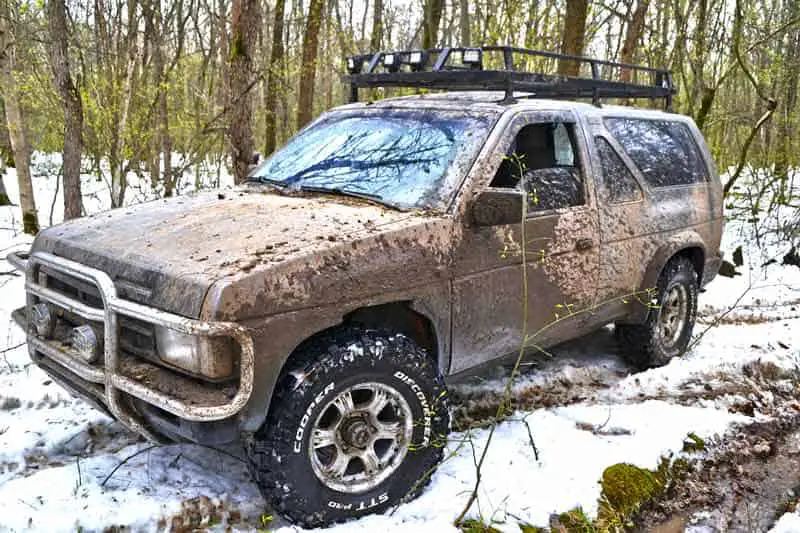
Since the narrow grooves (compared to KM3) don’t allow that much traction on snowy roads, one might find himself in trouble if STT tires are used. The vehicle will lose control as the grooves are stuffed with snow and don’t offer any grip.
Rocky Terrain Performance
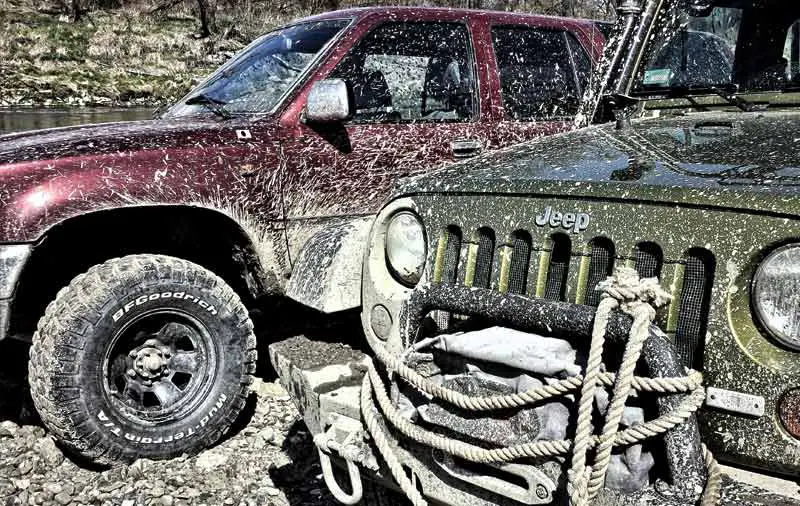
The KM3 has wide grooves which allow incredible grip from any angle of approach and it has bold stone ejectors which help to avoid the stones or pebbles from getting stuck inside the grooves. So due to this feature it moves smoothly on rocks with good traction.
STT has narrow and deep grooves which creates a biting action that helps expel stones and debris, increasing traction as a result. Moreover, raised rubber ribs and angled groove walls work together to further eject stone and gravel to maintain grip. But the bold stone ejectors of KM3 gives it an edge over the STT in rocky terrain.
Comparing Comfort
KM3 produces a lot of noise due to massive gaps in its tread design. The air after hitting the tire gets trapped inside the grooves and the air particles hit the walls back and forth producing a lot of noise especially when driving on a highway at high speed.
STT’s narrow grooves design allows cancellation of excess noise which makes it less noisy. Since the gap between the treads are comparatively lesser than KM3, so the fewer amount of air particles are trapped in between, consequently the tire produces less noise.
Durability and Treadwear
KM3 has lower rolling resistance which means less force is required to move or roll the tire as compared to STT, this is mainly due to less contact patch of tire with the road which also decreases the chances of treadwear. Meanwhile, KM3 also has CoreGard Max Technology which helps prevent sidewall splitting and puncturing. It protects the critical sidewall failure zone with increased thickness of sidewall increasing durability.
When we consider STT its design doesn’t allow stones to get stuck inside the tire which improves wear and prevents tread damage and its unique design of treads with serrated edges improves treadwear. Comparing both, the STT has more rolling resistance due to more contact patch hence having less durability, Its treadwear is also more due to high rolling resistance.
Value To Money?
The MT category tires are generally expensive.
And comparing these, BF Goodrich KM3 is slightly high-priced because of its extensive off-road characteristics.
Copper STT Pro also performs well while off-roading but KM3 is more preferred by the off-road enthusiast.
Quick Summary
- Both tires are Mud Terrain
- On-road dry traction of STT is better.
- The off-road performance of KM3 tires is better in mud and rocky terrain.
- Both the tires perform almost equally in snow.
- STT is better equipped to counter noise making it more comfortable.
- Overall durability and treadwear resistance of KM3 is better.
- KM3 is a more expensive compared to STT.


